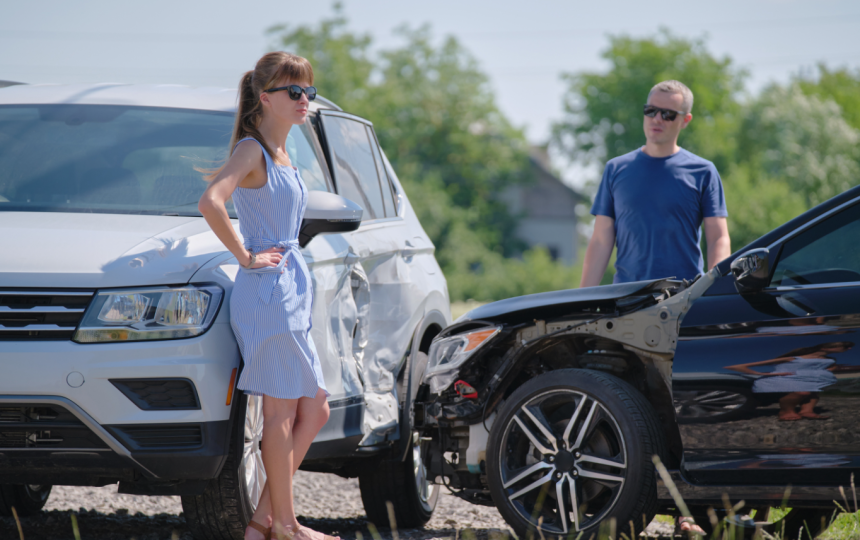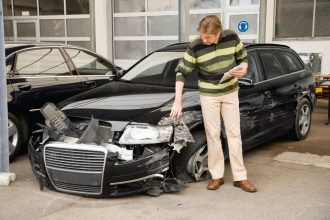Car accidents are an unfortunate reality on the roads, and distinguishing between fault and non-fault incidents can significantly impact how drivers navigate the aftermath. In the UK, the frequency of non-fault accidents is on the rise, making it crucial for motorists to comprehend the nuances of these situations. In this comprehensive guide, we’ll delve into the intricacies of non-fault car accidents, offering valuable insights and actionable advice to empower you in the event of such an incident.
- Defining Non-Fault Car Accidents
- Common Scenarios of Non-Fault Accidents
- Immediate Actions After a Non-Fault Accident
- The Role of Insurance in Non-Fault Accidents
- Understanding No-Fault Claims Process
- Figuring Out Whether You Have Injuries
- Move Slowly
- Consider Common Injuries
- Look for Visible Signs
- Check Your Vision
- Conclusion
Defining Non-Fault Car Accidents
First things first, what exactly qualifies as a non-fault car accident? Simply put, a non-fault accident occurs when one driver is not deemed responsible for the collision. Legal definitions typically consider factors like negligence, traffic violations, and other contributing elements. Understanding this distinction is vital, as it forms the foundation for the subsequent steps you’ll need to take after an accident.
Common Scenarios of Non-Fault Accidents
Non-fault accidents can take various forms, each presenting its own set of challenges. Rear-end collisions, parking lot mishaps, and side-impact crashes are just a few examples. Picture this: you’re patiently waiting at a traffic light when, out of nowhere, another driver collides with the back of your car. In such scenarios, determining fault becomes crucial for insurance claims and potential legal actions. Head to https://www.rtaclaims.co.uk/non-fault-accident if you need assistance with a claim after a non-fault accident.
Immediate Actions After a Non-Fault Accident
So, you’ve found yourself in a non-fault accident—what’s next? The immediate aftermath requires a calm and collected approach. Start by ensuring everyone’s safety, then gather essential information from the other party involved. Details like names, contact information, and insurance details are crucial. Remember to report the incident to the local authorities and, if possible, document the scene through photos or notes. These steps lay the groundwork for a smoother claims process.
The Role of Insurance in Non-Fault Accidents
Now that the dust has settled, it’s time to involve your insurance company. Contact them promptly to report the non-fault accident and provide the necessary evidence. It’s essential to communicate openly, sharing the details of the incident and any documentation you’ve collected. Keep in mind that non-fault accidents may still impact your insurance premiums, and it’s crucial to understand how your policy might be affected.
Understanding No-Fault Claims Process
The no-fault claims process streamlines compensation for victims of non-fault accidents. This means that instead of determining fault and going through a lengthy legal battle, the emphasis is on getting you the support you need promptly. It’s a quicker, more straightforward process that can alleviate some of the stress that often accompanies traditional claims.
Figuring Out Whether You Have Injuries
It doesn’t matter whether you’re in a minor crash or a head-on collision. Car accidents can cause a variety of injuries, and some of them require a lot of recovery time. Don’t make the mistake of jumping out of your car soon after the accident. You should take a moment to understand what has happened and calm yourself down. most importantly, you need to assess whether you have injuries.
The adrenaline in your body can mean that you don’t realise you’re hurt straight away. It can mask the pain for a while. But, quick movements have the ability to make injuries worse. So, you need to do your best to slow down and check yourself over. Here are some tips to help you see whether you’re injured.
Move Slowly
First, move parts of your body slowly. This includes your neck and head, as well as your arms and legs. Sudden movements could bring out pain or make the situation worse. So, take your time if you’re not in immediate danger. If you can, figure out where feels weak as you move it. This could indicate there’s an injury there.
Consider Common Injuries
There are some common injuries sustained in minor and major car crashes. In particular, whiplash is a big one. This means that you should be cautious with this part of your body so that you don’t aggravate a problem. Some people suffer head and back injuries too. Watch out for stiffness or if you have a limited range of motion.
Look for Visible Signs
Some injuries will manifest with obvious signs. For example, there can be swelling around an area, or there can be blood and bruising. Some breakages can be visible too. Take a look around your body and see if you can notice any obvious injuries. Try to remain calm if you do notice a problem.
Check Your Vision
If you’ve hit your head, you might experience changes in your vision. Consequently, it makes sense to check your vision after a crash. Take a look around and see if you notice changes in colours or have any blurry vision. You might even have trouble hearing after a crash.
Conclusion
In conclusion, navigating non-fault car accidents involves a combination of understanding, action, and, sometimes, legal considerations. This comprehensive guide has equipped you with the knowledge to distinguish non-fault situations, take immediate actions, and make informed decisions throughout the claims process. Remember, being prepared for the unexpected can make all the difference on the road.














